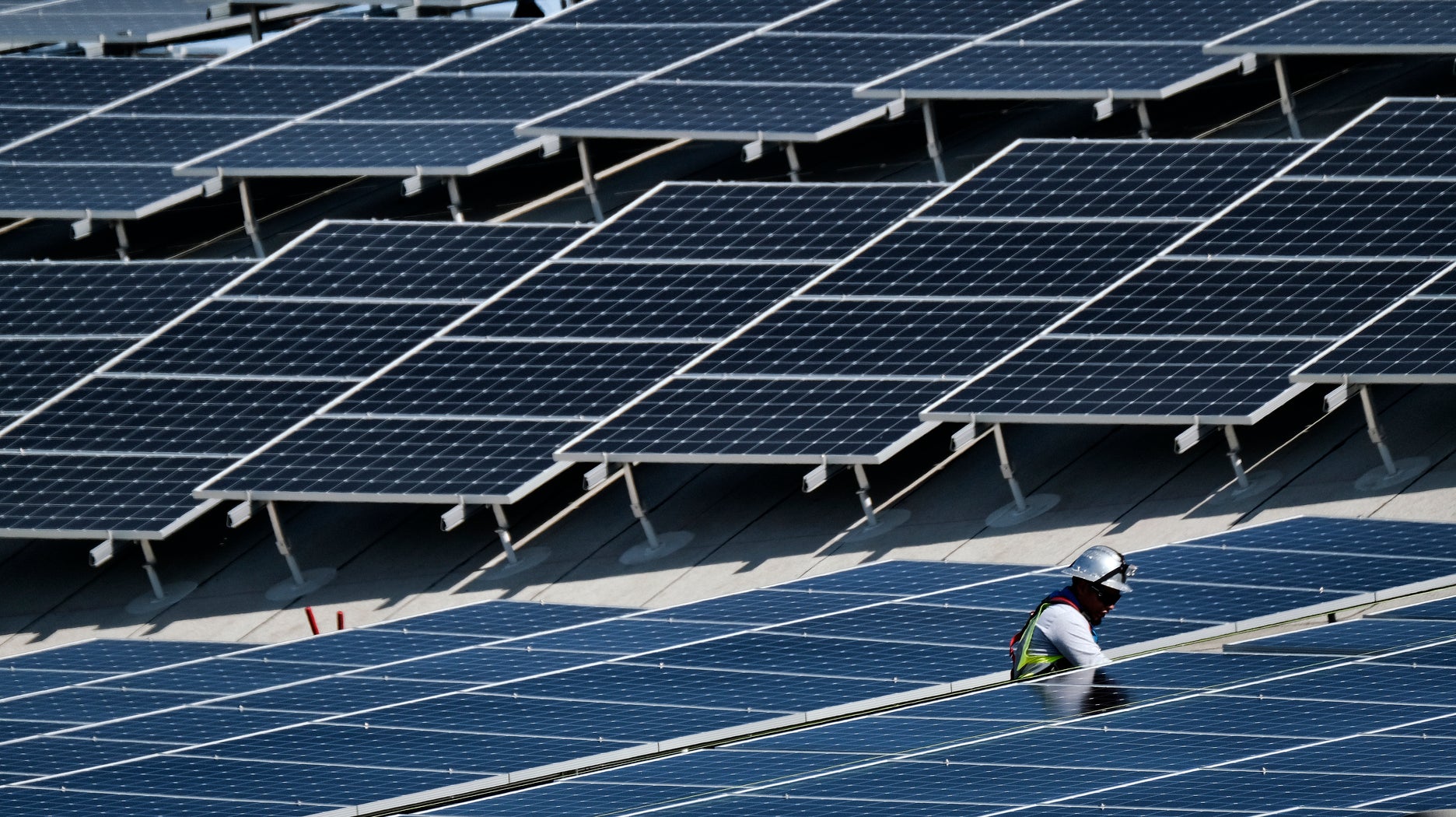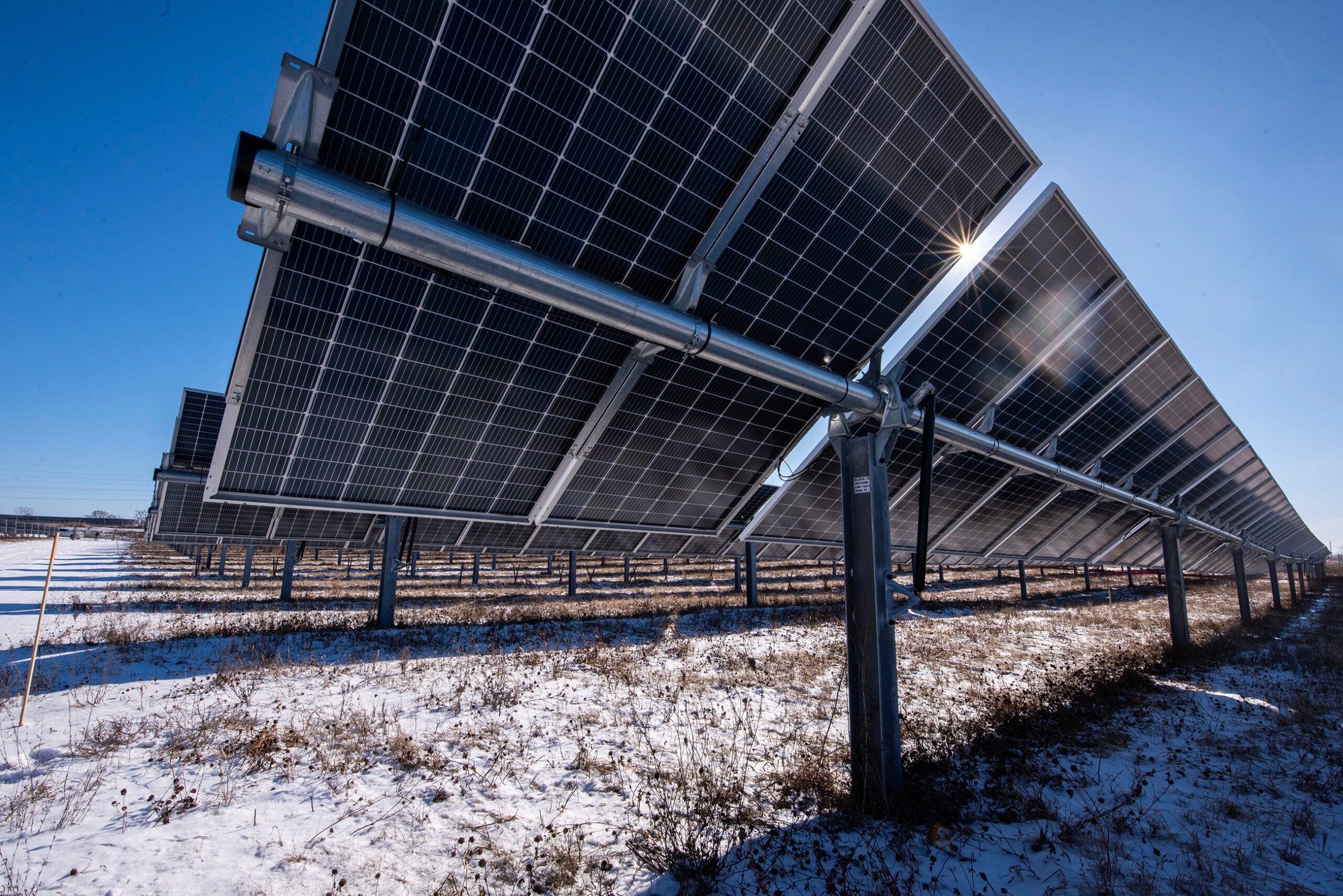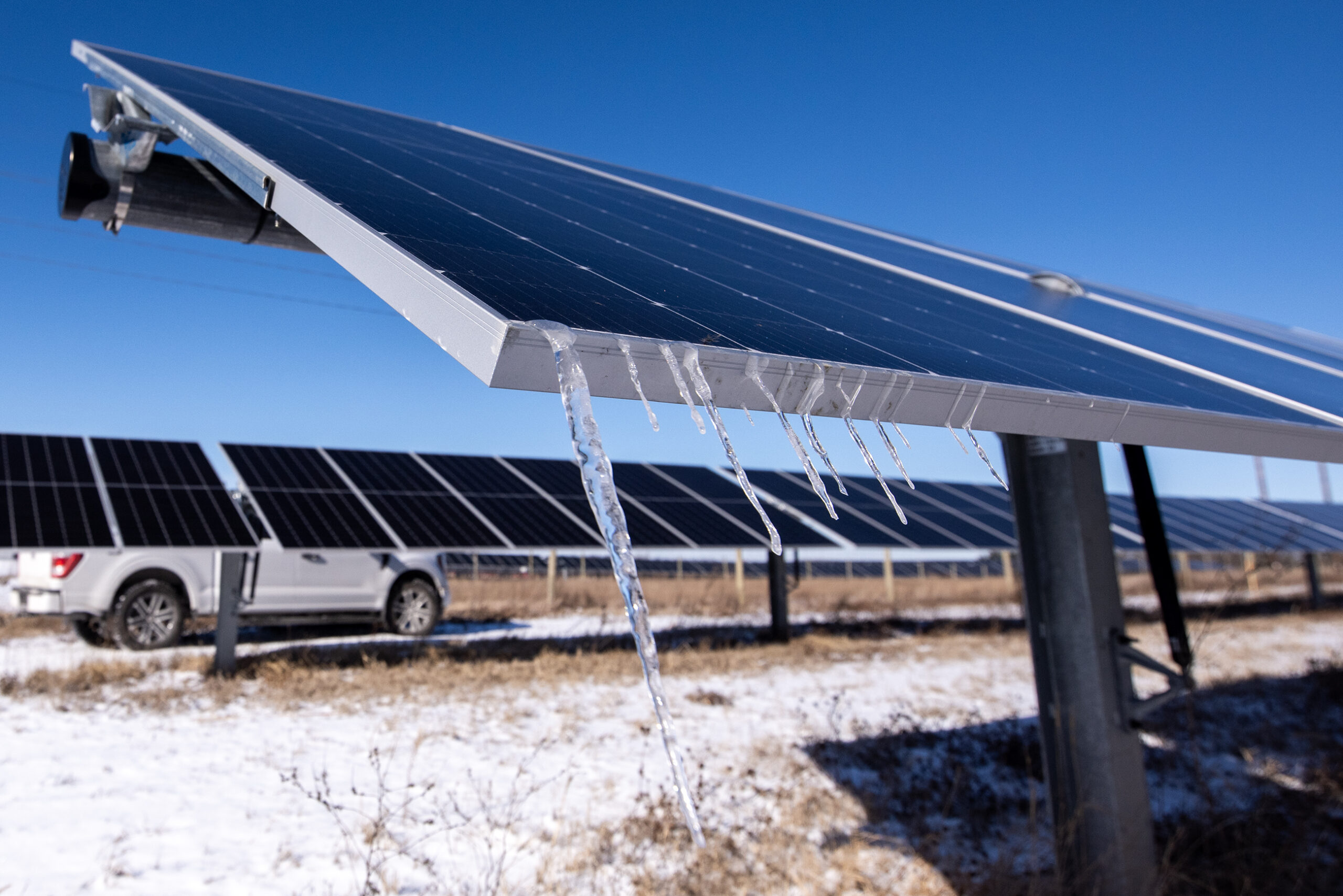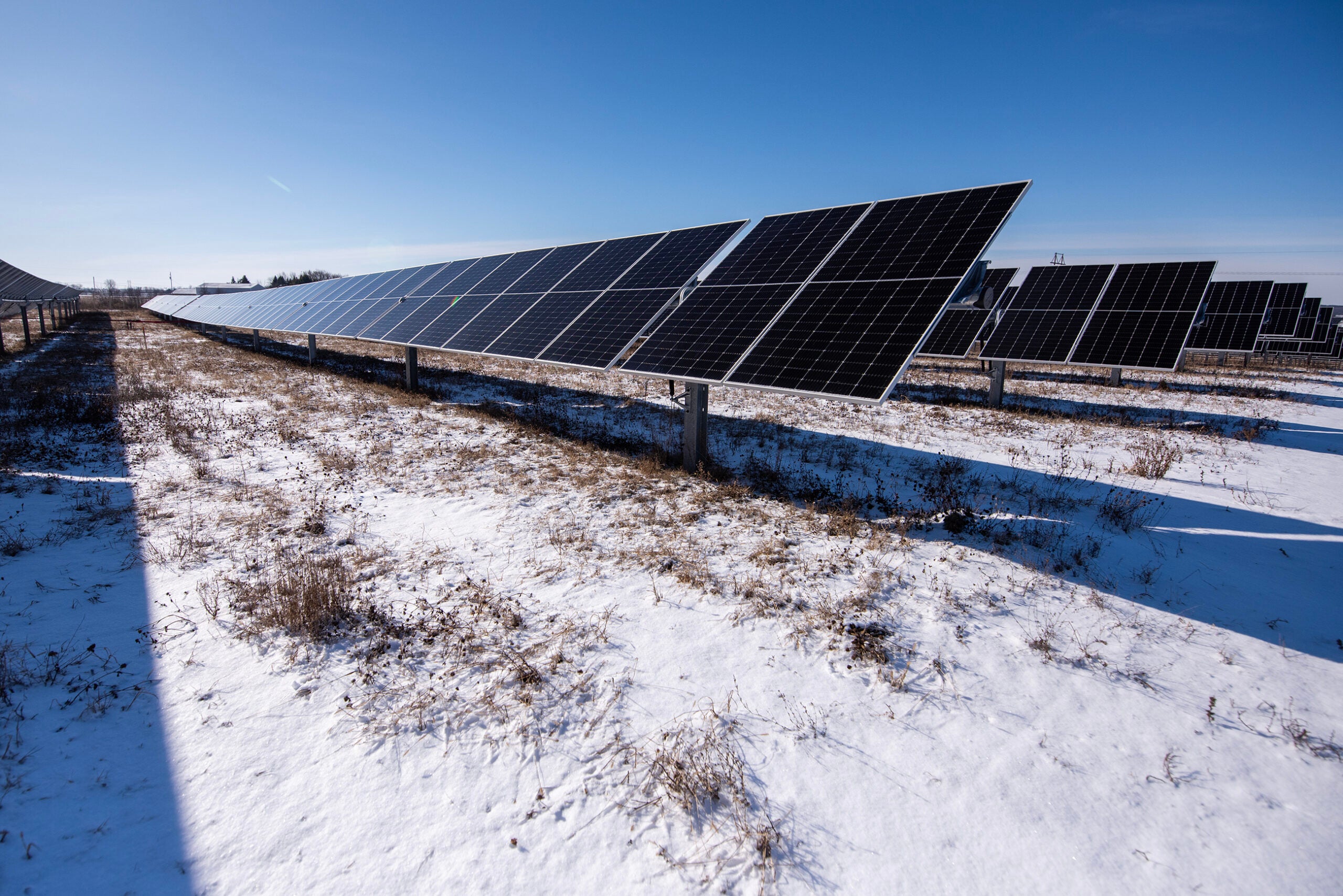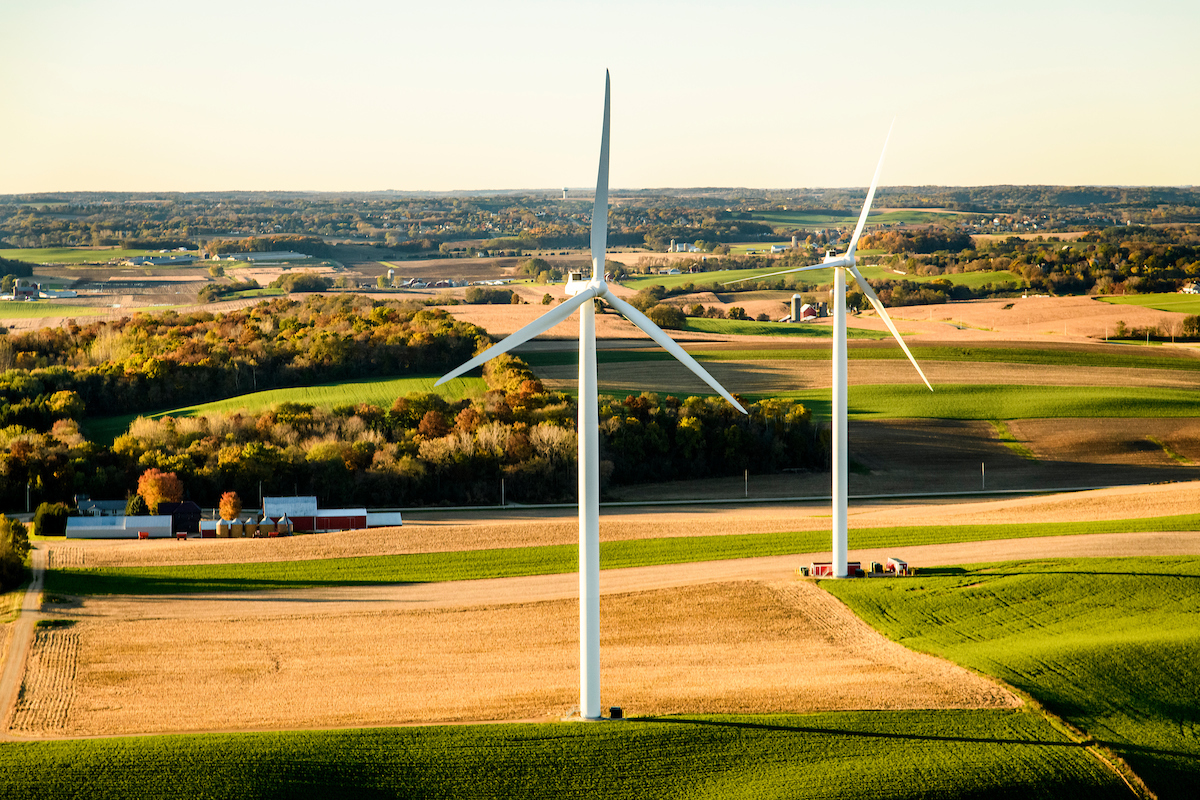The clean energy sector has been one of the fastest-growing in the state in recent years. But now, more than 11,000 such workers are out of job due to the coronavirus pandemic, according to a study released Thursday.
Clean energy jobs can range from installing renewable energy projects like wind and solar to improving energy efficiency through weatherizing or rehabilitating buildings. At the end of 2019, Wisconsin had 76,685 people who were working in the clean energy sector, mostly in energy efficiency jobs.
Since March, one in seven clean energy workers, or 11,366 people, have filed for unemployment in Wisconsin, according to the latest Clean Jobs Midwest report from Environmental Entrepreneurs and Clean Energy Trust. However, the pace of job loss appears to be slowing, according to Heather Allen, interim executive director for RENEW Wisconsin.
News with a little more humanity
WPR’s “Wisconsin Today” newsletter keeps you connected to the state you love without feeling overwhelmed. No paywall. No agenda. No corporate filter.
She said the state lost about 3,000 clean energy jobs in March, followed by another 8,000 in April. In May, around 500 people lost their jobs. Allen said the majority of those jobs were located in urban areas like Milwaukee County, which has the most confirmed COVID-19 cases in Wisconsin.
“I will say that jobs like solar installers, those actually seem to have been the most resilient — the least affected,” said Allen. “People in Wisconsin are still installing solar really at a rapid rate, and we’re seeing it in all sectors. So, fortunately, those particular types of clean energy jobs seem to be providing a good, stable foundation for our local economy.”
Major utilities in Wisconsin have begun investing in solar in recent years as the cost of renewable sources of energy have declined. Alliant Energy unveiled its $900 million plan to add 675 megawatts of solar across six counties last month as part of its goal to add 1,000 megawatts of solar power by 2023.
Wisconsin has 5,755 megawatts of large-scale solar under development as of April, according to RENEW Wisconsin. The Public Service Commission anticipates community solar capacity will grow to 8.3 megawatts with additions this year.
Prior to the pandemic, Wisconsin’s clean energy sector was growing two times faster than total statewide employment, and the number of employees represented two times the number of people working in the fossil fuels sector.
Allen believes energy efficiency jobs may have been most impacted by the COVID-19 crisis in Wisconsin because they typically involve indoor projects where people are working in close quarters.
“Health and safety is absolutely the number one thing we do we need to do to make sure folks can go to work, do the work and get it done safely, and that no one else is affected negatively by that work,” she said. “So, I think getting those protocols in place has probably been one of the biggest challenges to figure out how to do that for energy efficiency.”
The pandemic has disrupted job gains after five years of growth in the sector across the Midwest. More than 131,600 clean energy workers have filed for unemployment across the region in the first three months of the pandemic, according to the report. More than 744,000 people were employed by the clean energy sector in the Midwest prior to the COVID-19 crisis.
“History has shown us that clean energy investments and stimulus have a track record of creating jobs and building our economy,” said Micaela Preskill, Midwest advocate for Environmental Entrepreneurs, in a statement. “As we look to economic recovery, we urge lawmakers to consider the size, scope and potential for growth of the clean energy industry.”
Illinois, Michigan, and Ohio were hit the hardest by clean energy job losses in the Midwest, according to the report. More than 620,000 people have filed for unemployment in the clean energy industry nationwide.
Wisconsin Public Radio, © Copyright 2025, Board of Regents of the University of Wisconsin System and Wisconsin Educational Communications Board.

